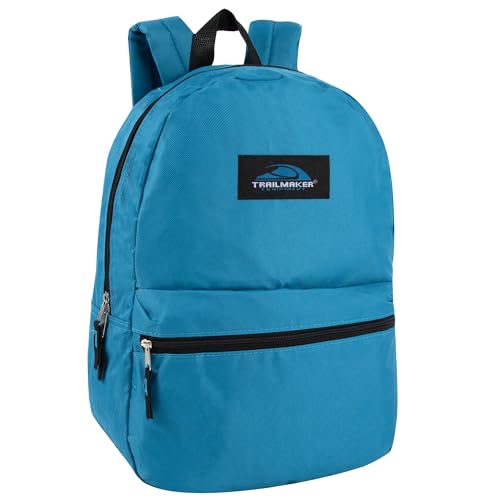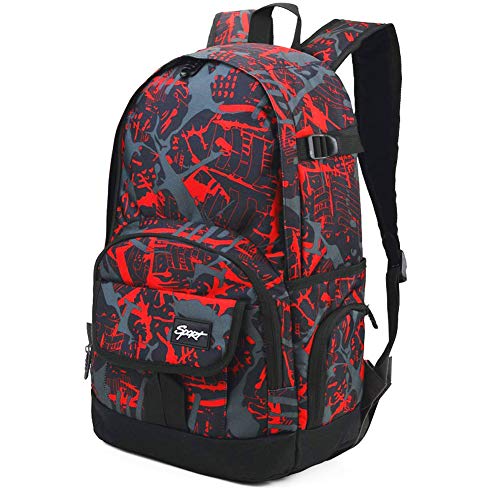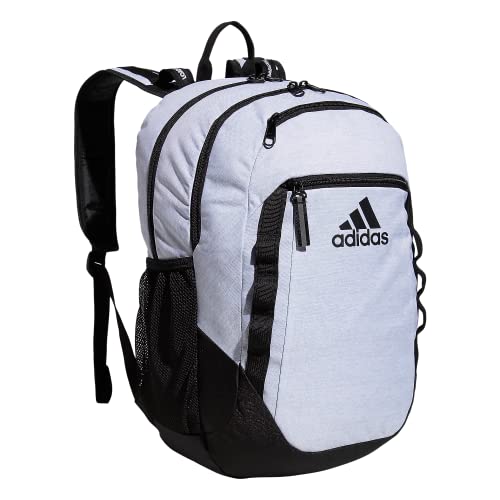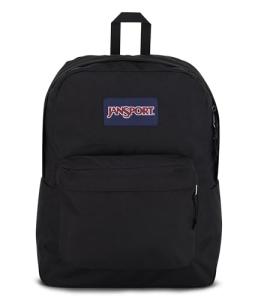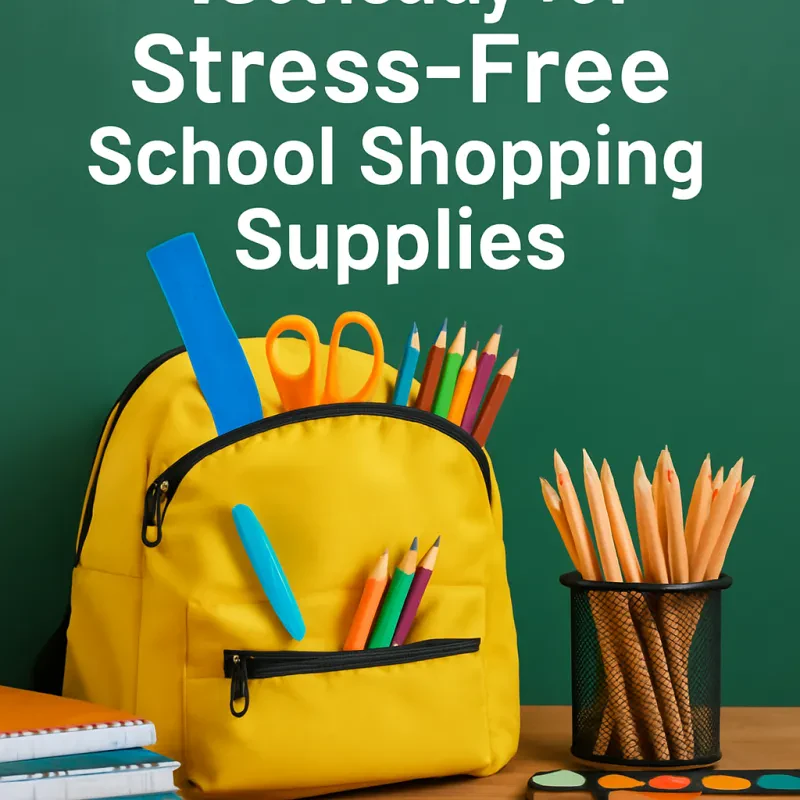Introduction to Back-to-School Shopping
Back-to-school shopping is a pivotal aspect of preparing for the academic year, encompassing a range of activities such as purchasing supplies, clothing, and technology. As families gear up for another school year, the significance of planning ahead cannot be overstated. Traditional shopping patterns often reveal that many parents and students delay this essential task until late summer, which can lead to a myriad of challenges.
During the rush of back-to-school sales, consumers frequently encounter crowded stores, dwindling supplies, and inflated prices due to high demand. The chaos of last-minute shopping can lead to impulse buying and suboptimal choices, ultimately resulting in heightened stress levels and overspending. Additionally, navigating through crowded aisles and lengthy checkout lines can consume valuable time that families could otherwise spend enjoying summer activities together.
By planning ahead and beginning the back-to-school shopping process early, families can mitigate these challenges significantly. Early preparation allows shoppers to create well-thought-out lists comprised of essential items tailored to each child’s needs. This strategic approach not only ensures that desired products are in stock but also offers the opportunity to take advantage of promotions and sales that may occur earlier in the season. Furthermore, shopping well ahead of the school year enables parents and students to explore options, compare prices, and make informed purchasing decisions.
In effect, early back-to-school shopping can contribute to substantial savings, both financially and in terms of time spent shopping. Ultimately, those who take the initiative to prepare in advance can enter the new school year with greater confidence, ensuring that they are fully equipped to embrace the challenges and opportunities that lie ahead.
The Advantages of Early School Shopping
Planning your school shopping in advance can yield numerous benefits, setting the stage for a smoother transition into the new academic year. One of the primary advantages is the reduction of last-minute stress. When families wait until the final days before school begins to purchase supplies and clothing, they often encounter crowded stores, depleted stock, and a hurried atmosphere, creating an anxious shopping experience. By starting early, parents can avoid the frenzy that often accompanies back-to-school shopping, allowing for a more organized and leisurely approach.
Additionally, early school shopping allows consumers to take advantage of sales and discounts that may not be accessible as the school year approaches. Retailers frequently offer substantial reductions on school supplies, apparel, and electronics during early summer. By planning ahead, families can capitalize on these promotions, ultimately saving money on essential items. This financial benefit can be especially important for those managing a budget during the back-to-school season.
Moreover, shopping early provides a wider selection of products. When purchasing school supplies closer to the start of the school year, parents may find that popular items have been sold out or that the preferred brands and styles are no longer available. By shopping in advance, families can ensure they are choosing the right items to meet their children's needs, from school bags to specific notebooks. This wider selection can contribute to greater satisfaction with purchases and ensure that students have everything they require on the first day of school.
In summary, taking the time to plan your school shopping early can lead to a more relaxed experience, financial savings, and a larger array of products to choose from, ultimately benefiting both parents and students alike as they prepare for the upcoming academic year.
Creating a Back-to-School Shopping List
As the summer months approach, planning your back-to-school shopping becomes essential for a smooth transition into the new academic year. A well-structured shopping list can save both time and money, ensuring that you acquire all necessary school supplies and clothing efficiently. The first step in crafting this list is to review the specific requirements provided by your child's school. Schools often publish detailed lists outlining the supplies needed for each grade level, which serves as a crucial starting point for your shopping endeavors.
In addition to the school's requirements, it is vital to take into account your child's individual needs. Engage in a conversation with your child to understand their preferences, particularly regarding clothing styles and necessary supplies such as notebooks, pens, and backpacks. This collaboration not only makes the shopping experience more enjoyable, but it also ensures that your child feels confident and prepared as they return to school. Furthermore, identifying items that can be reused from the previous year—such as bags, calculators, or binders—can significantly reduce costs.
Once you have categorized the necessary items, it becomes essential to prioritize them based on budget and necessity. Start by listing out must-have supplies and clothing, focusing on essentials that your child will require for the first few weeks of school. Subsequently, consider optional items that could enhance their educational experience but aren't immediately necessary. Additionally, setting a budget for each category can help maintain financial discipline during shopping trips. By summing up the required supplies and understanding your child's preferences while adhering to a budget, you can create a comprehensive back-to-school shopping list that ensures no vital items are overlooked. This strategic approach sets the foundation for a successful school year ahead.
Budgeting for School Supplies and Clothing
Effective budgeting is a fundamental aspect of planning for school shopping, particularly when aiming to manage the financial implications of acquiring necessary supplies and clothing. The first step in this process is to establish a clear budget based on realistic financial parameters. Consider evaluating your total income, existing expenses, and any allocated funds specifically for school shopping. This will help to set a budget limit that is both attainable and allows for flexibility as needed.
After determining the overall budget, it is essential to track spending diligently. Keeping a record of purchases ensures you do not exceed your financial limits. Utilizing tools such as budgeting apps or simple spreadsheets can facilitate this process. These tools enable you to categorize expenses, aiding in the assessment of how much has been spent on each type of item—whether it be school supplies, clothing, or other essentials. Additionally, maintaining a shopping list can help prioritize purchases according to necessity, which contributes to better financial management.
Seeking out deals and discounts is another vital tip in the budgeting process. Many retailers offer back-to-school sales, which can significantly reduce overall costs. Being proactive in research allows shoppers to discover promotions, coupons, or special offers that align with their needs. Furthermore, it is essential to balance quality with cost. While it is tempting to select the cheapest options available, investing in durable and high-quality items can lead to long-term savings, as they are less likely to need replacement. Prioritizing quality alongside budget considerations creates a more effective and sustainable shopping strategy.
Finding the Best Deals and Discounts
As the school year approaches, planning your shopping strategy can significantly impact your budget. One of the most effective ways to maximize savings is by taking advantage of clearance sales. Many retailers clear out inventory during the summer months to make space for new products. By shopping during these sales, you can find essential items at reduced prices, offering a perfect opportunity to stock up on necessary supplies.
Another helpful strategy is to keep an eye out for back-to-school promotions. Retailers frequently offer significant discounts on a variety of items targeted for students and parents preparing for the new school year. By focusing on these promotions, you can benefit from lower prices on essential school supplies, clothing, and technology. Subscribing to newsletters or following your favorite stores on social media can provide timely information on these sales as they launch.
Additionally, online shopping has transformed how consumers approach their back-to-school shopping. Many e-commerce platforms introduce exclusive online bargains that traditional brick-and-mortar stores may not offer. Utilizing price comparison tools can help you identify the best deals across various websites, ensuring you receive the lowest possible prices for your items. Furthermore, many online retailers provide coupons that can be applied at checkout for extra discounts, enhancing your overall savings.
Finally, utilizing loyalty programs can be an advantageous approach to school shopping. Many retailers have implemented loyalty programs that reward customers with points for every purchase, which can later be redeemed for discounts on future shopping. If you frequently shop at particular stores, joining these programs can result in significant savings during your back-to-school shopping efforts.
Choosing the Right Time to Shop
Timing is a critical aspect of planning for school shopping, especially when considering how to make the most of limited budgets. Early shopping, particularly as summer progresses, offers several advantages. Retailers often begin their back-to-school promotions well before August, allowing consumers to take advantage of significant discounts on essential items. Commonly, late July is when many stores launch their sales campaigns, which can provide excellent deals compared to those observed in August, when demand increases and prices may rise.
Taking the initiative to shop early not only allows for access to a wider variety of inventory but also provides the opportunity to secure items before they sell out. Popular products often experience stock shortages as the official school season approaches, making early shoppers less prone to the stress of last-minute purchases. Additionally, many stores have sales that cater specifically to families preparing for school during the summer months, which can result in notable savings compared to waiting until the frenzy of the back-to-school rush.
Conversely, shopping closer to the beginning of the school year can also have its merits. As prices fluctuate, some retailers may adjust their discounts to clear out remaining inventory, which could result in unexpected bargains. However, these opportunities can vary greatly and may require more effort and time to locate. It is critical for consumers to weigh the benefits of early versus late shopping based on individual needs, location, and target items. Ultimately, deciding when to shop for back-to-school supplies should consider both the potential for savings and the assurance of availability.
Sustainable and Eco-Friendly Shopping Options
In recent years, there has been a growing awareness of the impact that consumer choices have on the environment. As students prepare for the upcoming school year, it is essential to consider sustainable and eco-friendly shopping options. Choosing products that are kinder to the planet can significantly reduce waste and contribute to a greener future.
One of the most effective ways to shop sustainably is by opting for eco-friendly products. These items are typically made from recycled materials or sustainably sourced resources. For instance, look for notebooks made from recycled paper or pens crafted from biodegradable materials. Many manufacturers now produce environmentally responsible products that do not compromise on quality or functionality. Investing in eco-friendly supplies not only benefits the environment but often aligns with budget-friendly choices, as sustainable products tend to be durable and long-lasting.
Another excellent strategy is to explore the option of second-hand shopping. Thrift stores, consignment shops, and online marketplaces offer a treasure trove of gently used school supplies, clothing, and other essentials at a fraction of the retail price. By purchasing second-hand items, consumers can extend the life of products that might otherwise contribute to landfill waste. Additionally, this practice can enhance a student's unique style, allowing them to express themselves while being environmentally conscious.
Transitioning towards sustainable shopping practices also involves making mindful purchasing decisions, focusing on quality over quantity. It's important to assess the necessity of items before purchase, prioritizing those that fulfill specific needs while considering their environmental footprint. By approaching school shopping with an eco-friendly mindset, individuals can play a crucial role in promoting sustainability, ultimately benefiting both their budget and the planet.
Involving Children in the Shopping Process
Incorporating children into the school shopping process fosters a sense of responsibility and empowers them to make informed decisions. Engaging children in this activity not only enhances their budgeting skills but also helps them distinguish between their needs and wants. By taking the time to involve them, parents can significantly impact their children’s understanding of financial literacy early on.
One effective way to engage children is by creating a shopping list together. Parents can sit down with their children and discuss what items are essential for the upcoming school year. This collaborative approach encourages children to express their preferences while understanding the importance of necessities. For instance, parents can emphasize that while a trendy backpack might be appealing, practical items like notebooks and writing tools are essential. This dialogue allows children to actively participate in the decision-making process, fostering a sense of ownership over their choices.
Establishing a budget can also be an educational experience. Parents can discuss how much they plan to spend on school supplies and clothing, helping children grasp the concept of financial limits. By involving children in this step, they learn how to allocate funds adequately and prioritize their wants. For example, if the budget allows for a special item but not multiple trendy choices, children will gain insights into making choices that reflect both their desires and the financial framework established by their parents.
Lastly, acknowledging your child’s input in selecting items instills confidence and accountability. Eliciting their opinions on school supplies or clothing helps them feel valued, reinforcing their ability to contribute during the shopping process. This collaboration lays the ground for further discussions on budgeting in the future, equipping children with skills that will benefit them well beyond their school years.
Conclusion
As the summer draws to a close, the anticipation of a new school year begins to settle in. Planning your school shopping early is not merely a suggestion; it is a proactive approach that significantly enhances the entire back-to-school experience. By embarking on your shopping journey ahead of time, you can avoid the last-minute rush that often accompanies the start of a new academic year. This foresight allows for thoughtful selection, ensuring that your children are equipped with the necessary supplies and clothing to foster their learning and engagement.
Furthermore, early shopping opens up opportunities for savings and discounts which are often missed when parents wait until closer to the first day of school. Retailers frequently offer markdowns on essential items in the weeks leading up to the back-to-school season. By taking action early, families can benefit financially, securing items crucial for educational success without stretching their budget. Moreover, the systematic organization of shopping allows parents to engage with their children about what they need, thus enhancing the excitement surrounding a new academic adventure.
Incorporating a thoughtful plan for school shopping also alleviates the stress that can often accompany this transition. When equipped with a well-defined list and an organized approach, parents and students alike can navigate their shopping experience smoothly. This creates a supportive environment where families can focus on preparing for the new school year, rather than scrambling at the last minute.
As you consider the upcoming school year, embrace the advantages of early planning. Encourage your family to embark on this shopping endeavor together, transforming what could be a chaotic experience into an enjoyable and organized one. By acting now, you can confidently prepare for a successful school year ahead.

